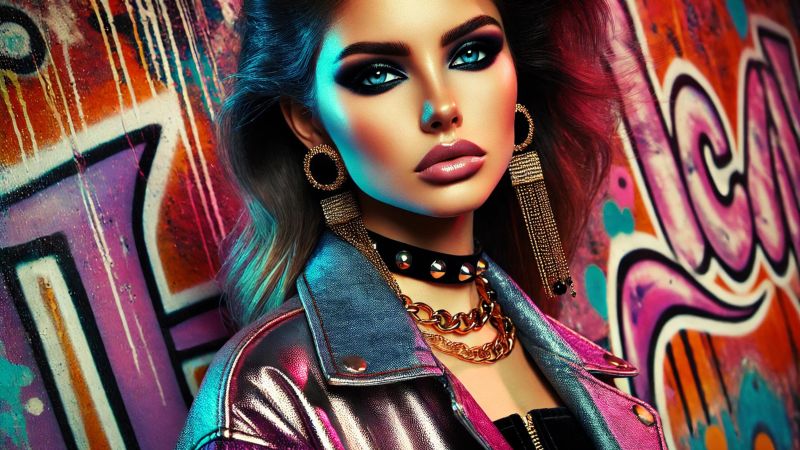Introduction
Beauty products are a fundamental part of daily routines for millions worldwide. From skincare to makeup, these products help enhance appearance, maintain skin health, and boost confidence. However, the sheer variety of beauty products available today can be overwhelming. This guide will navigate through the different types of beauty products, their benefits, key ingredients, and how to choose the right ones for your needs. Whether you are a seasoned beauty enthusiast or a beginner, this post aims to provide valuable information that will help you make informed choices.
Table of Contents
ToggleUnderstanding Beauty Products: Categories and Purposes
Beauty products can be broadly categorized into skincare, makeup, haircare, and body care. Each category has a unique purpose and a range of products designed to meet different needs.
- Skincare Products:
Skincare is perhaps the most critical aspect of any beauty routine. Proper skincare helps maintain the skin’s health, prevents premature aging, and addresses specific concerns like acne, dryness, or hyperpigmentation.
- Cleansers: The first step in any skincare routine, cleansers remove dirt, oil, and impurities from the skin’s surface. Depending on your skin type, you can choose from gel, foam, cream, or oil-based cleansers.
- Toners: Toners help restore the skin’s pH balance after cleansing. They can also hydrate, soothe, and minimize the appearance of pores.
- Moisturizers: Moisturizers are essential for maintaining the skin’s hydration. They create a barrier that locks in moisture and prevents water loss. There are various types of moisturizers, from lightweight lotions to rich creams, each suited to different skin types.
- Serums: Serums contain concentrated active ingredients that target specific skin concerns, such as wrinkles, dark spots, or uneven texture. They are usually lightweight and are applied before moisturizers.
- Sunscreens: Sunscreens protect the skin from harmful UV rays, preventing sunburn, premature aging, and reducing the risk of skin cancer. It’s crucial to use broad-spectrum sunscreen with an SPF of at least 30.
- Exfoliants: Exfoliants remove dead skin cells, unclog pores, and promote cell turnover, leaving the skin smoother and brighter. There are two main types: physical exfoliants (scrubs) and chemical exfoliants (AHAs, BHAs).
-
Makeup Products
Makeup products enhance features, create different looks, and can be a form of self-expression. The key is to understand the purpose of each product and how to use them effectively.
- Foundation: Foundation creates an even skin tone and provides a base for other makeup. It comes in various forms, including liquid, powder, and cream, and in a wide range of shades to match different skin tones.
- Concealer: Concealers provide additional coverage to hide imperfections like dark circles, blemishes, and redness. They are usually thicker than foundations and come in various forms, such as liquid, cream, and stick.
- Blush and Bronzer: Blush adds color to the cheeks, giving a healthy and youthful appearance, while bronzer adds warmth and a sun-kissed glow.
- Eyeshadows, Eyeliners, and Mascaras: These products define and accentuate the eyes. Eyeshadows come in various finishes, including matte, shimmer, and glitter, while eyeliners can be liquid, gel, or pencil. Mascaras enhance the lashes by adding volume, length, or curl.
- Lip Products: Lipsticks, lip glosses, and lip liners add color and definition to the lips. They come in various finishes, from matte to glossy, and in countless shades to suit different looks and occasions.
-
Haircare Products
Haircare products maintain hair health, improve texture, and help manage different hair types. The right products can make a significant difference in hair’s appearance and feel.
- Shampoos and Conditioners: Shampoos cleanse the hair and scalp, removing dirt, oil, and product buildup. Conditioners hydrate and smooth the hair, reducing frizz and adding shine.
- Hair Masks and Treatments: Hair masks and treatments provide intense nourishment and repair damaged hair. They are usually left on the hair for several minutes to allow the ingredients to penetrate deeply.
- Styling Products: These include hair sprays, gels, mousses, and creams that help shape, hold, and add volume or texture to hair.
- Heat Protectants: Heat protectants shield the hair from damage caused by styling tools like flat irons, curling irons, and blow dryers. They form a barrier that reduces heat exposure, preventing breakage and split ends.
-
Body Care Products
Body care products help maintain the skin’s health and appearance all over the body, not just the face.
- Body Washes and Soaps: These products cleanse the skin, removing dirt and sweat. Look for sulfate-free options that won’t strip the skin of its natural oils.
- Body Lotions and Creams: Moisturizers designed for the body help keep the skin soft and hydrated. Creams are usually thicker and more suitable for dry skin, while lotions are lighter and absorb quickly.
- Body Scrubs: Exfoliating scrubs for the body remove dead skin cells, leaving the skin smooth and glowing. They are typically used once or twice a week, depending on skin sensitivity.
Key Ingredients in Beauty Products: What to Look For
Understanding the ingredients in beauty products can help you make more informed choices. Here are some key ingredients to look for:
- Hyaluronic Acid: A powerful humectant that attracts and retains moisture, keeping the skin hydrated and plump. It’s suitable for all skin types and is often found in serums and moisturizers.
- Retinoids: Derived from vitamin A, retinoids promote cell turnover, improve texture, and reduce the appearance of fine lines and wrinkles. They are most effective in anti-aging products but can be irritating, especially for sensitive skin.
- Vitamin C: An antioxidant that brightens the skin, reduces hyperpigmentation, and boosts collagen production. It’s commonly found in serums and can enhance the skin’s radiance.
- Niacinamide: A form of vitamin B3 that strengthens the skin barrier, reduces redness, and minimizes the appearance of pores. It’s suitable for all skin types and is often included in moisturizers and serums.
- Salicylic Acid: A beta-hydroxy acid (BHA) that exfoliates the skin and unclogs pores, making it ideal for acne-prone skin. It’s commonly found in cleansers, toners, and spot treatments.
- Glycolic Acid: An alpha-hydroxy acid (AHA) that exfoliates the skin’s surface, improving texture and tone. It’s often used in chemical peels and exfoliating treatments.
- Peptides: Short chains of amino acids that help build proteins in the skin, such as collagen and elastin. They can improve skin firmness and elasticity and are found in anti-aging products.
Choosing the Right Beauty Products for Your Skin Type
Selecting the right beauty products depends largely on your skin type. Here’s a quick guide:
- Oily Skin: Look for lightweight, oil-free products that won’t clog pores. Ingredients like salicylic acid and niacinamide can help control excess oil and reduce breakouts.
- Dry Skin: Opt for rich, hydrating products that lock in moisture. Ingredients like hyaluronic acid, ceramides, and glycerin are excellent for keeping dry skin hydrated.
- Sensitive Skin: Choose gentle, fragrance-free products with soothing ingredients like aloe vera, chamomile, and allantoin. Avoid products with alcohol, synthetic fragrances, and harsh exfoliants.
- Combination Skin: Use a balanced approach with lightweight products for the oily areas and more hydrating options for the drier parts of the face. Ingredients like hyaluronic acid and niacinamide work well for combination skin.
- Aging Skin: Look for products with anti-aging ingredients like retinoids, peptides, and antioxidants. These help reduce the appearance of fine lines, wrinkles, and age spots.
The Importance of Patch Testing
Before introducing a new product into your routine, it’s essential to patch test it on a small area of your skin. This step can help prevent adverse reactions and ensure the product is suitable for your skin type. Apply a small amount of the product on the inside of your wrist or behind your ear and wait 24-48 hours to see if there is any irritation or redness.
Sustainability in Beauty: What to Consider
With increasing awareness of environmental impact, many consumers are looking for sustainable beauty products. Here are some factors to consider:
- Eco-Friendly Packaging: Look for products with recyclable or biodegradable packaging. Some brands use minimal packaging or offer refillable options to reduce waste.
- Cruelty-Free and Vegan: Cruelty-free products are not tested on animals, while vegan products do not contain animal-derived ingredients. Look for certifications like Leaping Bunny or PETA for cruelty-free assurance.
- Clean Beauty: Clean beauty products are formulated without harmful ingredients like parabens, sulfates, and synthetic fragrances. They focus on safe and non-toxic ingredients.
- Sustainable Sourcing: Some brands source their ingredients responsibly, ensuring they are harvested without harming the environment or depleting natural resources. Look for fair-trade certifications or transparent sourcing practices.



